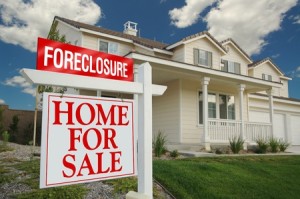Foreclosure and bankruptcy often go hand in hand. When you file chapter 7 or chapter 13 bankruptcy, you can keep your home as long as you are current on your mortgage payments. People who lose their home can eliminate the remaining debt after foreclosure. Under most circumstance, filing for bankruptcy will temporarily postpone the foreclosure process. Read on to learn more about how declaring bankruptcy may help save your home.
lose their home can eliminate the remaining debt after foreclosure. Under most circumstance, filing for bankruptcy will temporarily postpone the foreclosure process. Read on to learn more about how declaring bankruptcy may help save your home.
Foreclosure and Bankruptcy: Chapter 7
When you file chapter 7 bankruptcy, an automatic stay initiates. This is done to prevent any of your creditors from collecting debts. This includes any mortgage arrears you may owe. This continues while the process is moving forward.
Filing for chapter 7 bankruptcy will delay the foreclosure process for a short period of time. During this time, a mortgage lender can file a motion with the bankruptcy court. As a result, this motion requests a lift of the automatic stay. If successful the mortgage lender can proceed with the foreclosure. If you do not pay the arrears owed to the mortgage lender within due time, the foreclosure process will continue.
As mentioned above, you may avoid home foreclosure upon filing your chapter 7. However, this does not protect you from the foreclosure process which occurs outside the bankruptcy court. Declaring bankruptcy though will provide you with more time to pay any mortgage arrears owed if you wish to keep your home. You may also be able to keep your home by using a homestead exemption.
You must continue making monthly mortgage payments to your lender. If you fall behind on making your mortgage payments, you will lose your home through the foreclosure process.
This article may interest you Oklahoma Bankruptcy During Lawsuits
Foreclosure and Bankruptcy: Chapter 13
Unlike a Chapter 7 bankruptcy, filing a Chapter 13 bankruptcy may help you save your home. If you are current on your mortgage payment, you can keep your home. If you are behind on your mortgage or in foreclosure we can help. You may be able to keep your home as a result of a chapter 13 repayment plan. The chapter 13 repayment plan will allow you to pay on your mortgage arrears. The late payments spread out over the years in the plan. This usually last 3-5 years and will greatly reduce the overdue amount. You must continue to make timely mortgage payments from the date your Chapter 13 petition is filed.
Foreclosure and Bankruptcy Process
| Proceeding Timeline | Action | Homeowner Options |
| Start of Foreclosure Proceeding | Notice of Default | Homeowner can retain property by paying any debt(s) owed to lender within a specified time period from receiving the Notice of Default. |
| 3 Months After Notice of Default | Notice of Trustee Sale is Recorded | Homeowner can retain property by paying any debts owed to lender up until a specified period before the foreclosure sale. |
| Foreclosure Sale Date | Sale of Property | The property is sold to the highest bidder, or the property reverts to the foreclosing beneficiary. |
Attorneys for Foreclose and Bankruptcy:
If you are considering filing for bankruptcy, contact our debt relief attorneys to discuss how you can keep your home upon filing your petition. Several bankrupt consumers keep their home and successfully pay off their mortgage after declaring bankruptcy. Contact us to find out about bankruptcy and foreclosure and how you can stay in your home and have your debts completely discharged.
